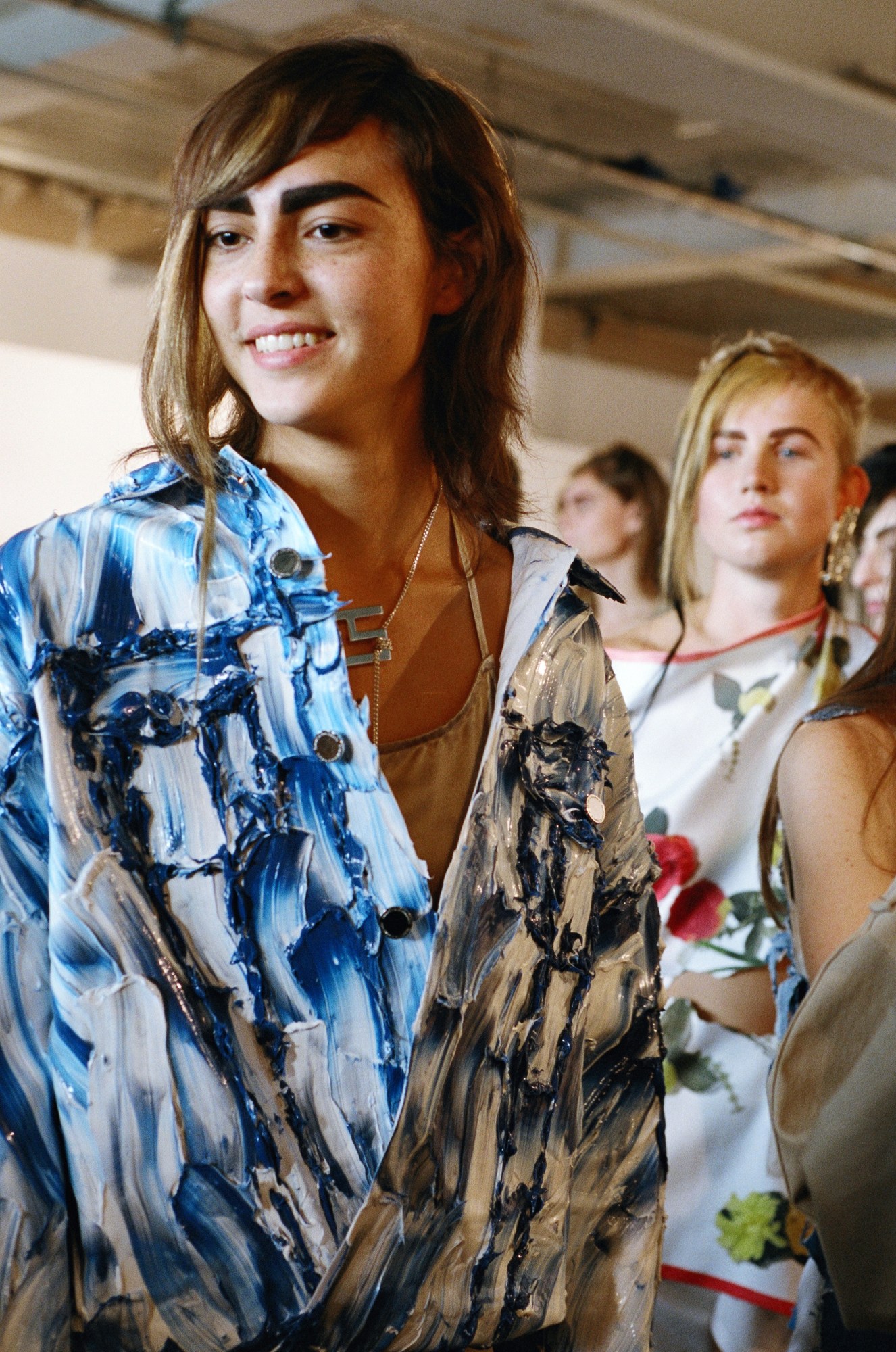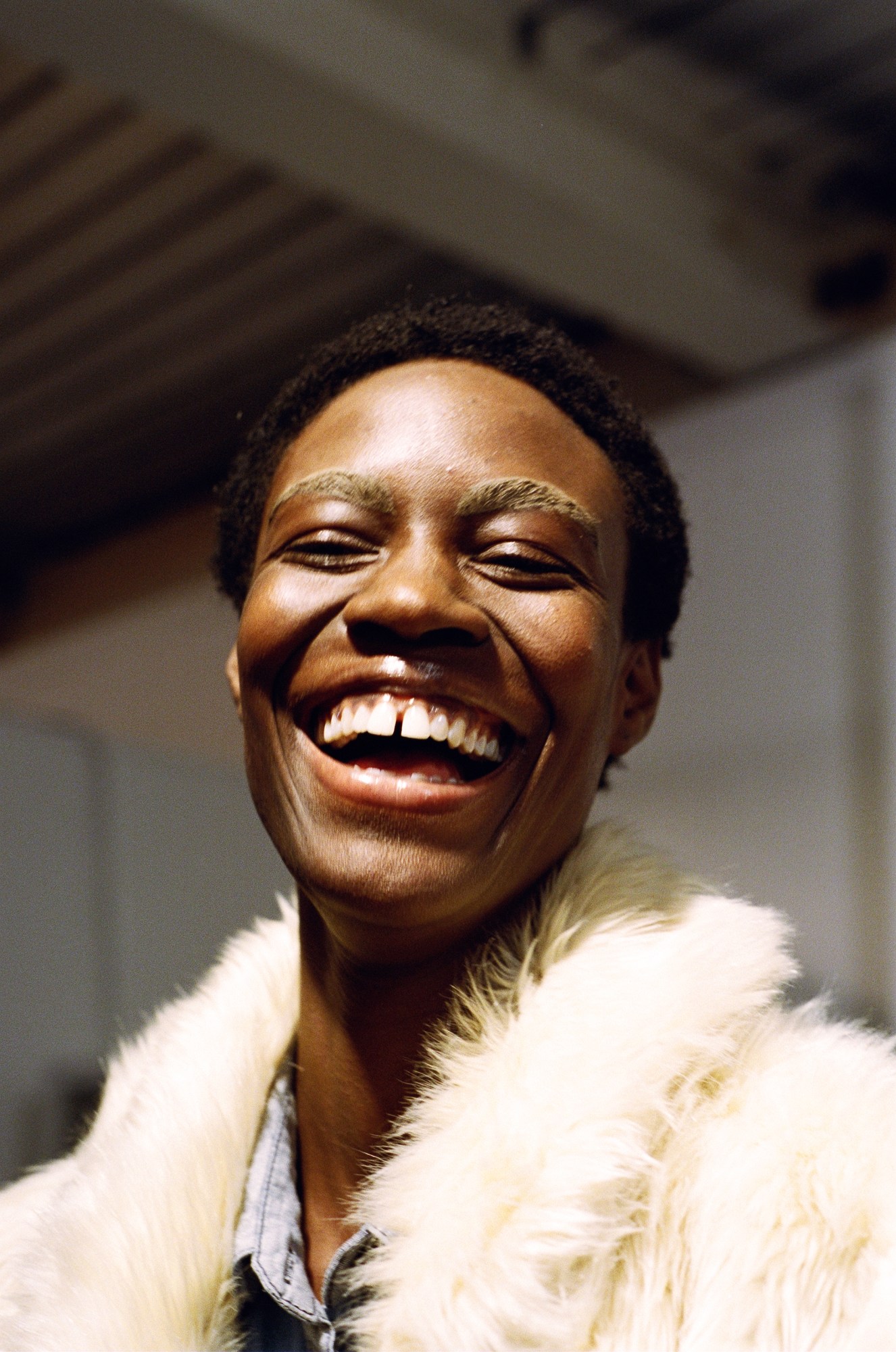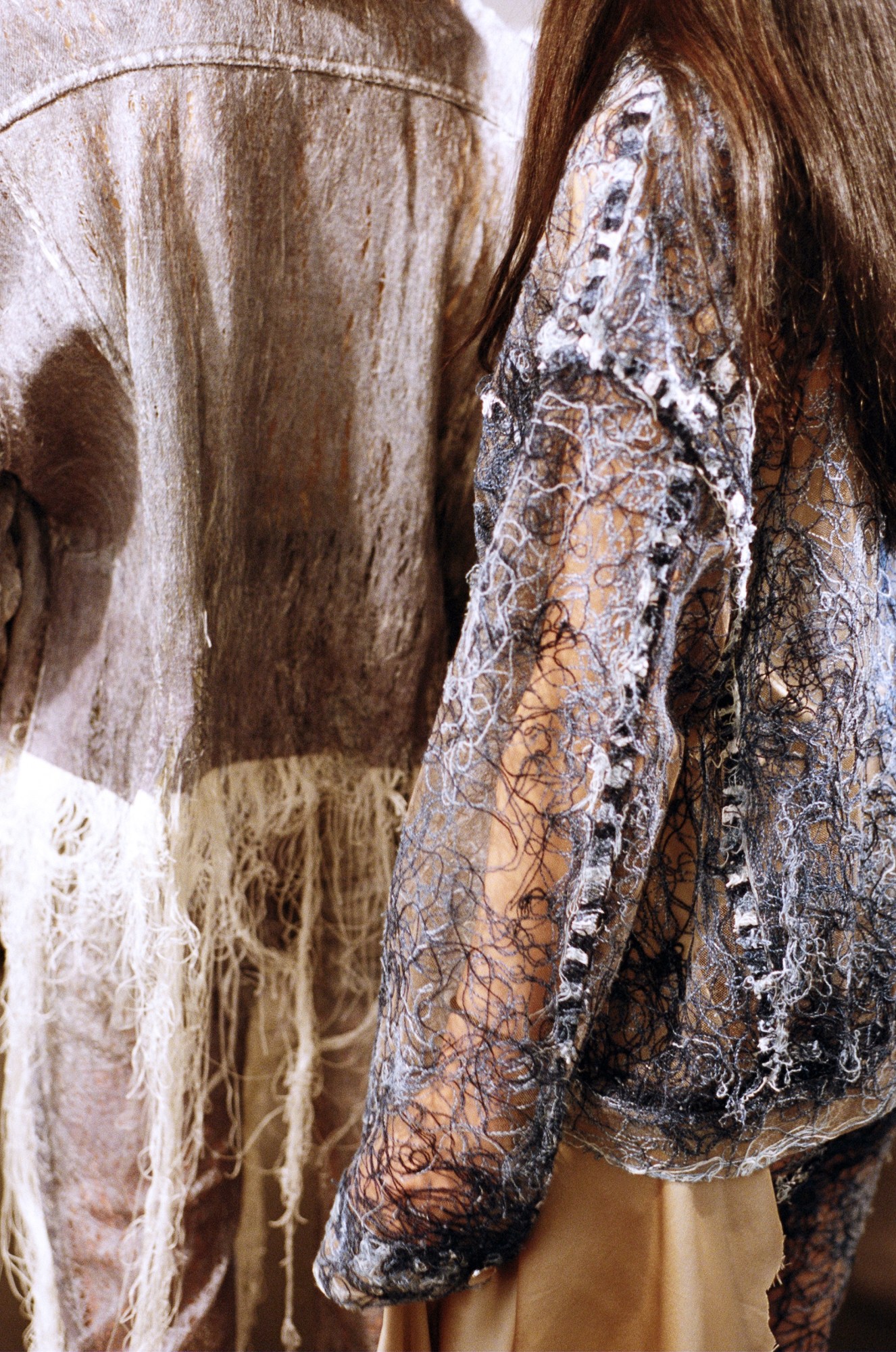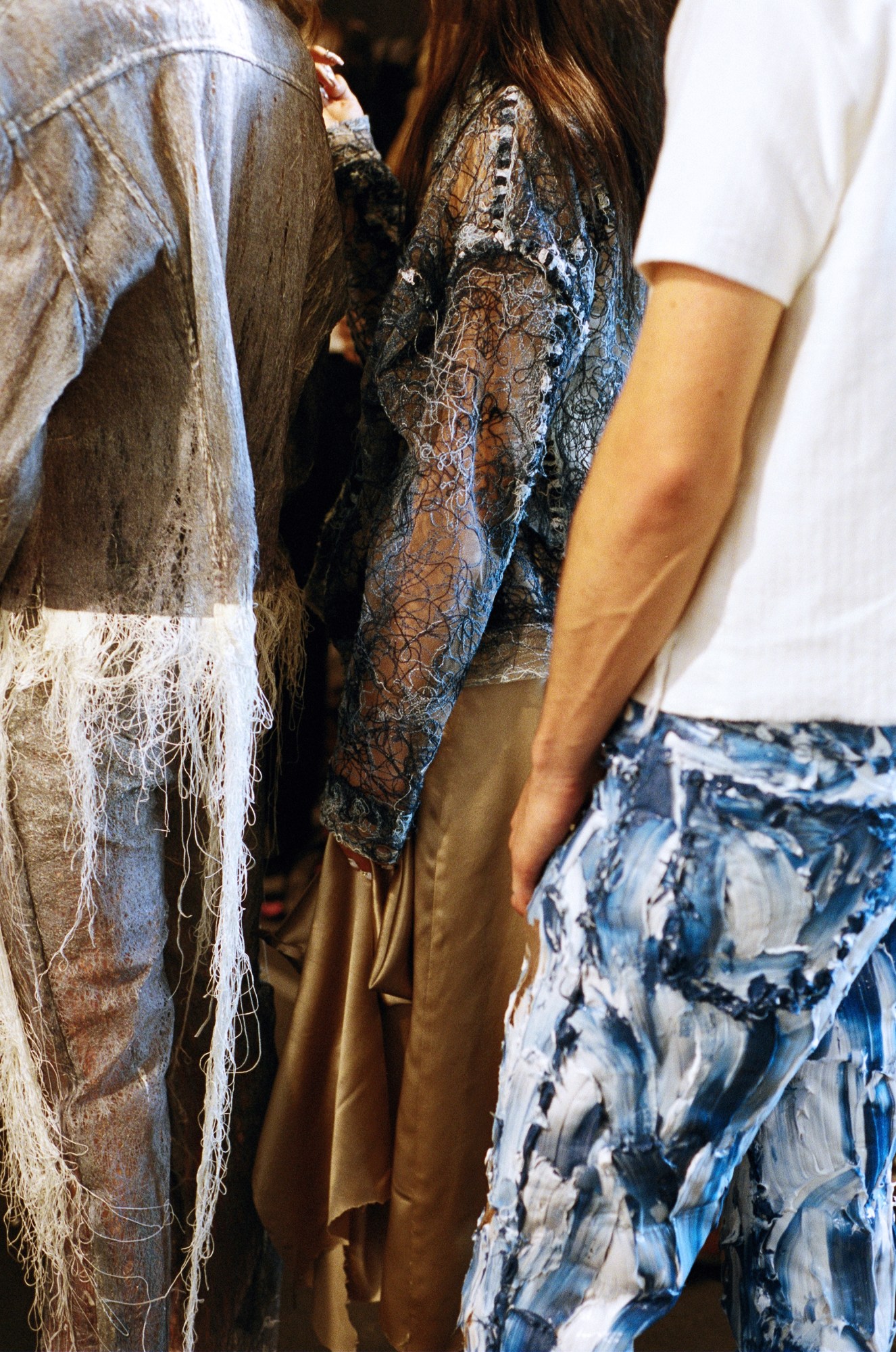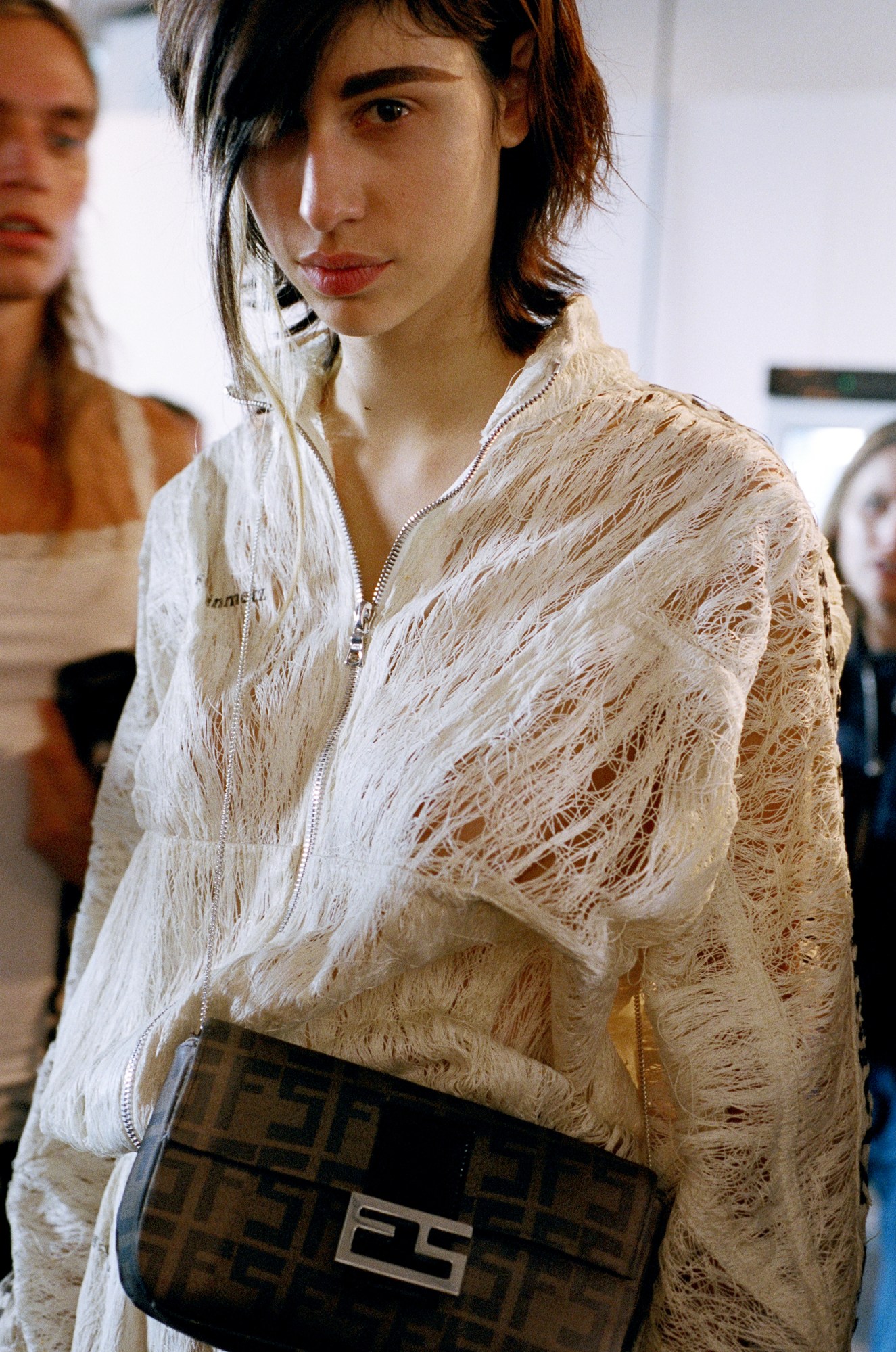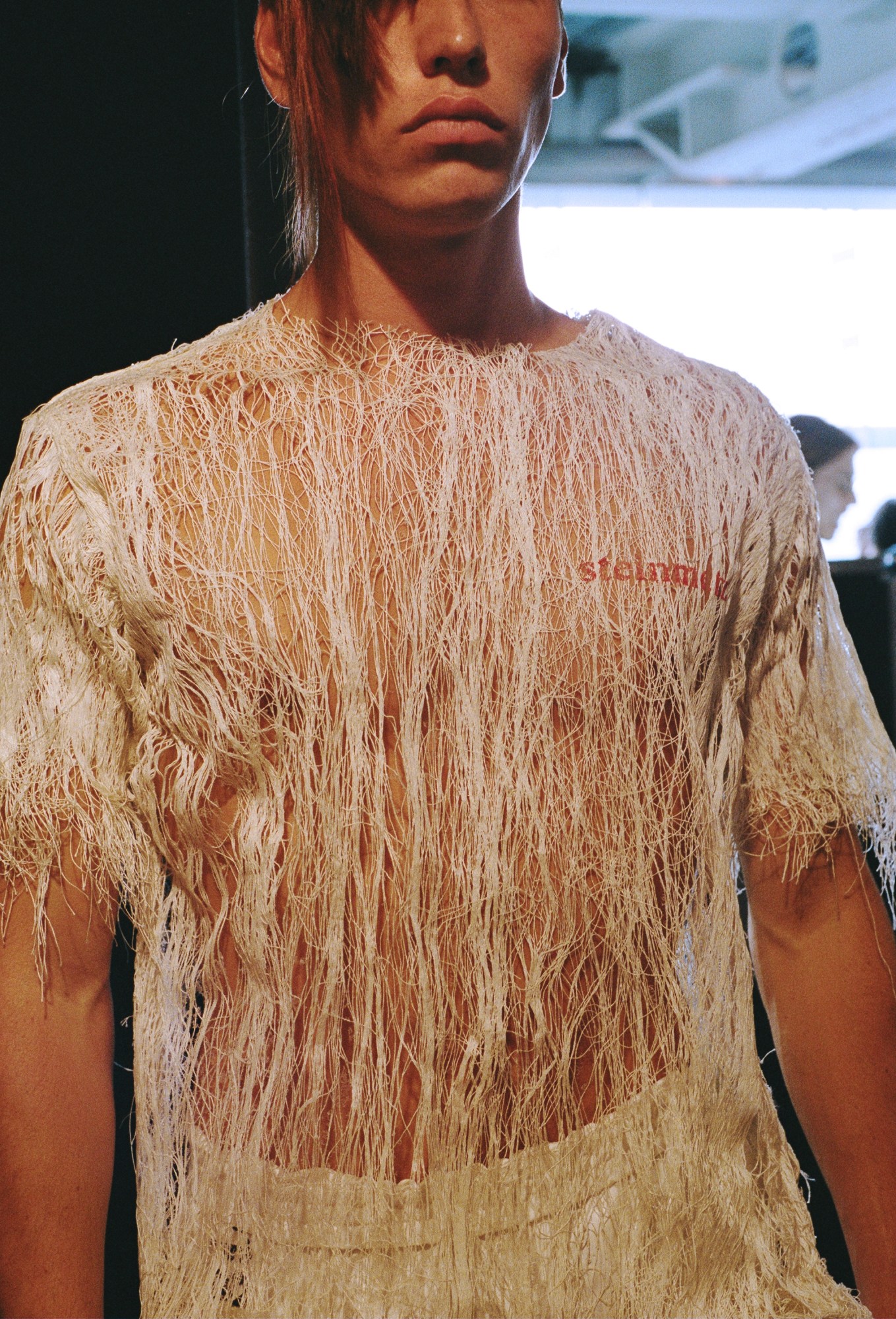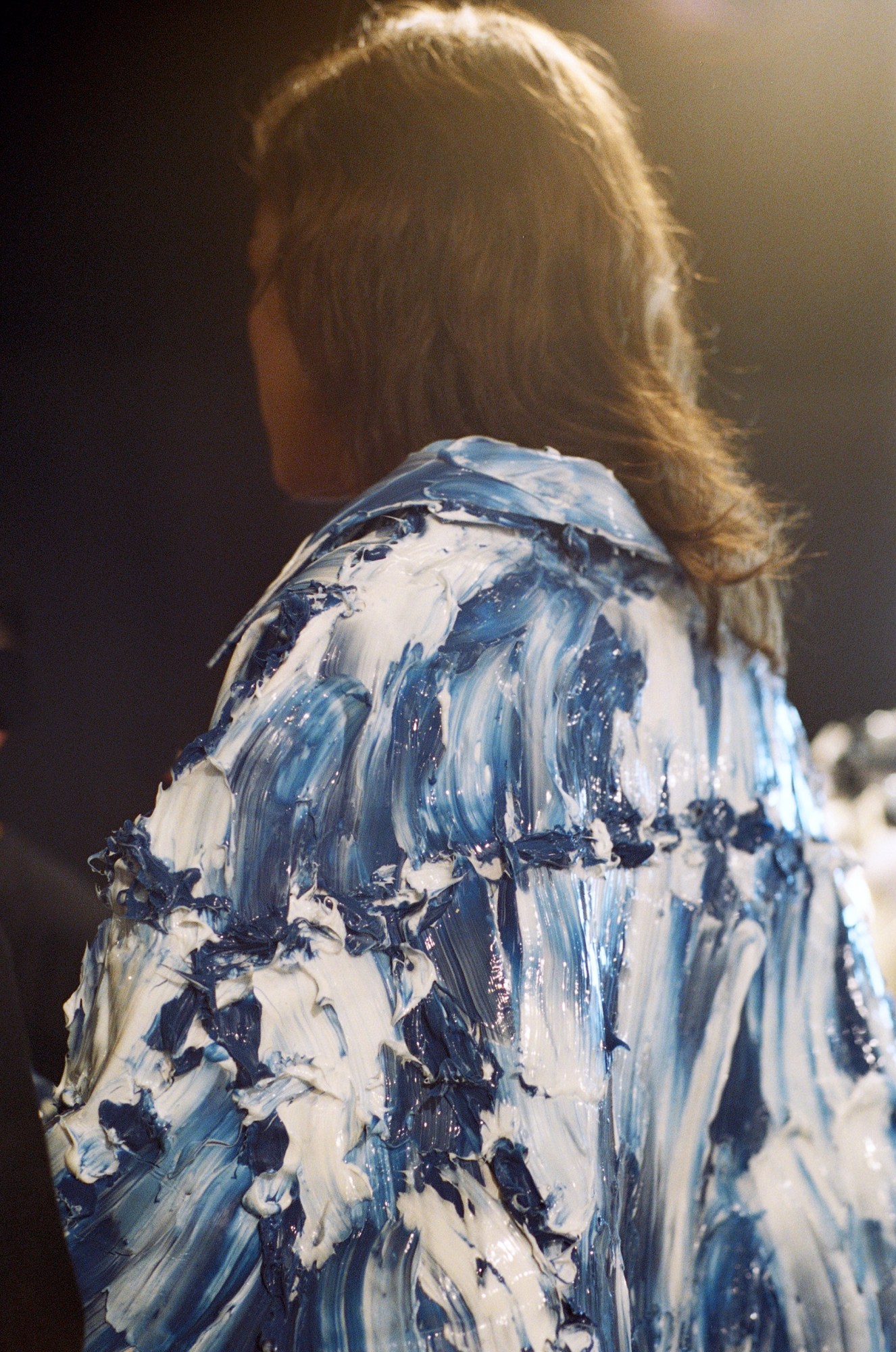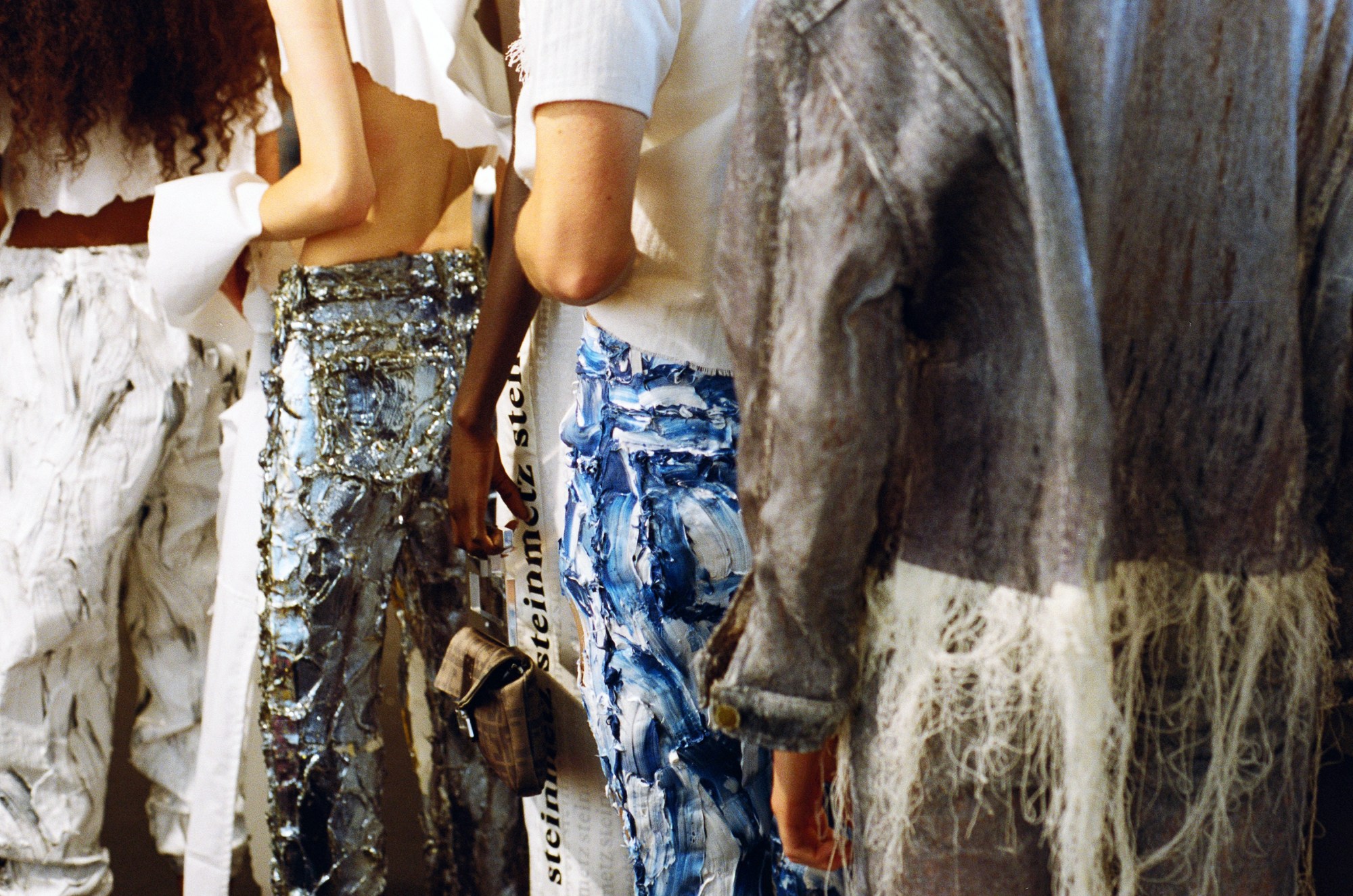From the moment the Paris-born, London-based designer launched her label in 2013 with her first handloom, Faustine Steinmetz has deconstructed and reconstructed, distressed and ornamented the most ubiquitous of everyday items and transformed them into pieces that aren’t just unrecognisable, they are otherworldly. After a series of acclaimed art-exhibition-style presentations, for which she has since won both the Swarovski Award and Woolmark Prize, Steinmetz condensed her world for her catwalk debut. “I wanted to take ten pieces that everyone knows and everyone has in their wardrobe at some point, them twist them, deconstruct them and put them together in new ways,” she explained backstage as her emotions welled-up.
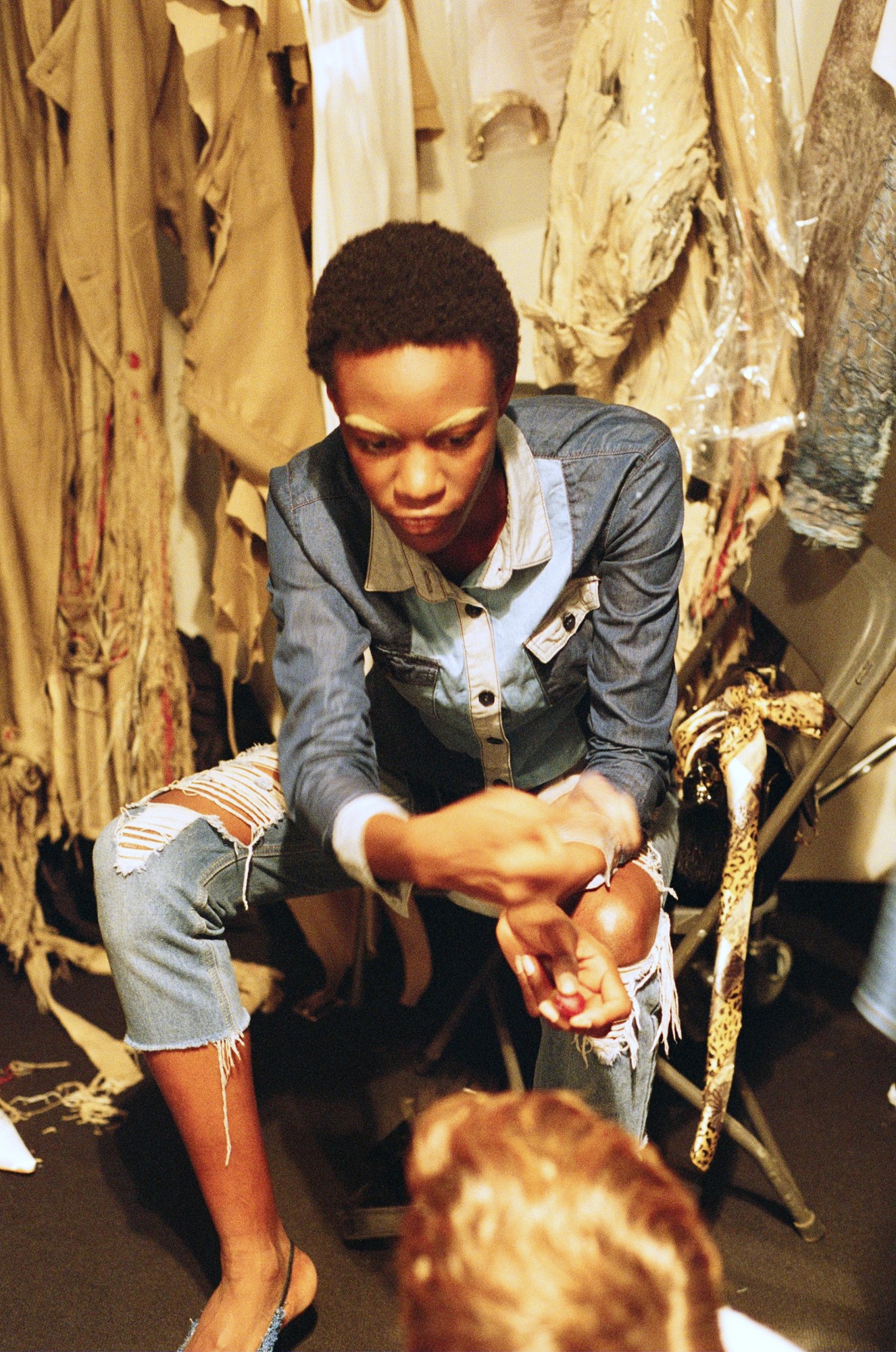
“I always said that I would never do a catwalk show because I didn’t want the collections to be about the glamour, the girl or the beauty but in the end I was freed by it.” Ignoring distractions, she focussed on the materials. “I can’t remember the last time that I felt as happy in the studio, working on my clothes. I didn’t focus on making fashion pieces, it was just basics that I hoped we elevated,” she added humbly. After photocopying the patterns of the core found pieces, the concept of this collection, aptly entitled Facsimile, was to replicate exact archetypes of clothing that everyone has or has had in their wardrobe — the old pair of jeans, the basic trench, a shoulder bag, the tracksuit — then reimagine them. “I’m not interested in fashion if it is unrelatable, it has to be grounded. I’m constantly inspired by real people on the street and how they wear their clothes. When you start from pieces that people know and wear, you can be creative as you want. That works well for me because I can really push it.”
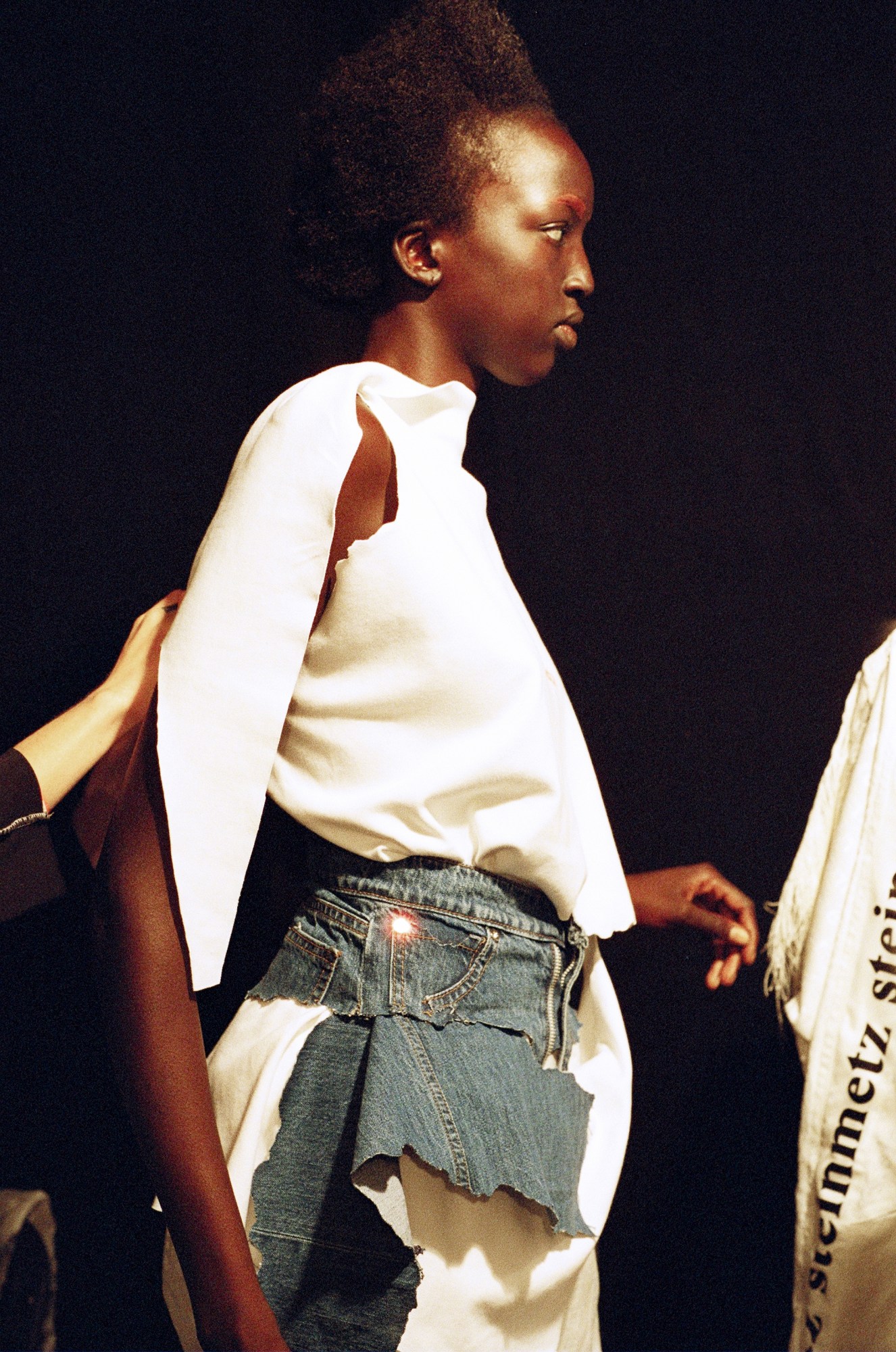
The resulting pushes saw the trench shredded as if it was paper, then completely transparent and made up of yarns another and entirely made out of recycled silicone. It was all about offering a different perspective and approach while providing each basic with a fresh narrative. The designer, famed for her trompe l’oeil felted “denims” and singular deconstructivist spirit, put sustainability at the centre of this collection once again. In a season in which London Fashion Week has faced protests — both from the blood soaked anti-fur activists and the one-man-and-a-megaphone — the industry cannot and should not escape the questioning of it motives and methods. Faustine Steinmetz is a designer who has always done just that and her answer is powerful and persuasive. While each fabric is hand-woven in her east London studio and all her pieces are entirely made in the UK, this designer’s conscience is clear. “When you’re a designer, you have certain sensitivities that shape your ideas and mine revolve around being in my studio and working on materials. They’re almost sculptures at first but after work they reveal themselves.”

